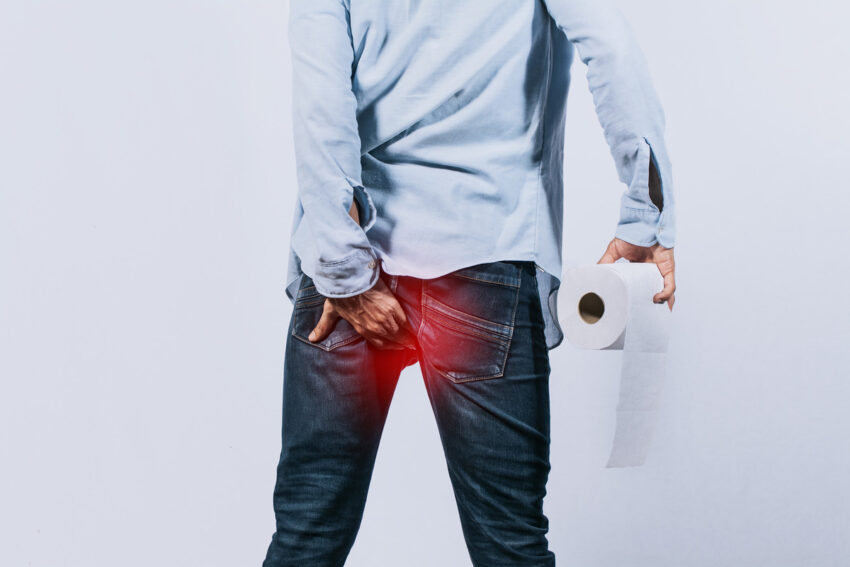Hemorrhoids, a common ailment affecting countless individuals, can be a source of discomfort, pain, and embarrassment. Fortunately, the world of medical science offers a variety of hemorrhoid treatment options, each with its own set of benefits and considerations. In the quest to find relief and restore well-being, individuals facing hemorrhoids are presented with a crucial decision — to opt for traditional surgical procedures or to explore the realm of non-invasive methods.
As medical understanding evolves and technologies advance, the medical community has innovated to provide alternatives to conventional surgical intervention. Non-invasive methods have emerged as compelling options, promising reduced pain, quicker recovery times, and potentially fewer disruptions to daily life. However, it’s imperative to weigh these benefits against the proven track record of surgical procedures in addressing hemorrhoidal concerns.
This article then delves into the nuances of these two distinct approaches, shedding light on their effectiveness, recovery processes, and overall impact on the patient’s quality of life. Whether one seeks rapid relief or values a more gradual, less intrusive path to healing, understanding these treatment avenues is a pivotal step toward regaining comfort and restoring confidence. Read on to learn more.
Non-Invasive Hemorrhoid Treatment Methods
Non-invasive hemorrhoid treatment methods offer a compelling alternative to traditional surgical interventions. These approaches prioritize patient comfort, reduced recovery times, and the preservation of daily routines. Techniques such as rubber band ligation, sclerotherapy, and infrared coagulation work by targeting the affected area without the need for incisions or anesthesia. By utilizing cutting-edge technologies and medical advancements, non-invasive methods aim to alleviate discomfort, shrink hemorrhoidal tissue, and promote natural healing.
Lifestyle Changes
Embracing lifestyle changes represents a cornerstone of non-invasive hemorrhoid treatment, empowering individuals to manage their condition proactively. By making adjustments to dietary habits, incorporating regular physical activity, and practicing proper bathroom habits, patients can significantly reduce the frequency and severity of hemorrhoidal flare-ups. Fiber-rich diets, increased water intake, and avoiding prolonged sitting are pivotal strategies that promote healthy bowel movements and alleviate strain on the rectal area.
This holistic approach not only offers relief from current discomfort but also serves as a long-term preventive measure against future hemorrhoid issues.
Topical Treatments
Topical treatments constitute a convenient and non-invasive avenue for managing hemorrhoidal discomfort. These treatments, available in the form of creams, ointments, and suppositories, are designed to alleviate symptoms such as itching, swelling, and irritation. Many topical products contain ingredients like hydrocortisone, witch hazel, or aloe vera, which can provide soothing relief and promote healing.
These treatments offer a localized approach to symptom management without the need for invasive procedures as they directly target the affected area.
Sitz Baths
Sitz baths have also emerged as a simple yet effective non-invasive method for alleviating the discomfort associated with hemorrhoids. This therapy involves immersing the lower pelvic area in warm water for a brief period. The warm water helps to promote relaxation, reduce inflammation, and improve blood circulation in the affected area.
Sitz baths not only provide immediate relief from symptoms like pain and itching but also contribute to the overall healing process by keeping the area clean and aiding in the reduction of swelling.
Surgical Hemorrhoid Treatment Methods
Surgical hemorrhoid treatment methods stand as a well-established option for individuals seeking more comprehensive and immediate resolution to their hemorrhoidal issues. Procedures like hemorrhoidectomy and stapled hemorrhoidopexy involve the physical removal or repositioning of hemorrhoidal tissue, effectively addressing both internal and external hemorrhoids.
While these surgical interventions require a period of recovery and may involve some discomfort, they offer a high likelihood of complete removal and relief from persistent symptoms. Surgical methods are often recommended for severe cases or when non-invasive treatments have proven ineffective.
Hemorrhoidectomy
Hemorrhoidectomy, a surgical hemorrhoid treatment, involves the complete removal of hemorrhoidal tissue, providing a comprehensive solution for individuals dealing with severe or persistent hemorrhoid issues. This procedure is particularly effective for larger or prolapsed hemorrhoids that cause significant discomfort and disrupt daily life.
During a hemorrhoidectomy, the surgeon excises the hemorrhoidal tissue and then sutures the remaining tissue. While effective, this surgical approach does require a period of recovery, during which patients may experience some discomfort and require pain management.
Hemorrhoidopexy (Stapling)
Hemorrhoidopexy, a surgical technique employed in treating hemorrhoids, focuses on repositioning prolapsed internal hemorrhoids to their normal anatomical position. This method, also known as stapled hemorrhoidopexy or procedure for prolapse and hemorrhoids (PPH), aims to restore proper blood flow and alleviate symptoms by stapling and reattaching the hemorrhoidal tissue within the anal canal. This minimally invasive approach offers advantages such as reduced postoperative pain and quicker recovery compared to traditional hemorrhoidectomy.
Coagulation Techniques
Coagulation techniques, employed in surgical hemorrhoid treatment, offer a targeted approach to addressing hemorrhoids by using methods like infrared coagulation or laser therapy. These techniques focus on shrinking and sealing off the blood vessels supplying the hemorrhoidal tissue, resulting in reduced swelling and discomfort. Infrared coagulation delivers precise bursts of infrared light to the hemorrhoids, causing them to coagulate and eventually recede. Laser therapy achieves a similar outcome by using focused laser energy.
These minimally invasive methods result in minimal tissue damage, making them appealing options for patients seeking quicker recovery times and reduced pain compared to more extensive surgical procedures.
Key Takeaway
Comparing surgery to non-invasive methods as hemorrhoid treatment options presents individuals facing hemorrhoidal discomfort with a critical choice that reflects their unique preferences and medical needs. Surgical interventions offer comprehensive solutions by directly addressing the source of the problem, often providing long-term relief. On the other hand, non-invasive methods prioritize patient comfort and aim to alleviate symptoms without resorting to surgery. While surgical procedures offer rapid and potentially definitive resolution, they involve a period of recovery and some discomfort. Non-invasive methods, while gentler, may require ongoing management.
Therefore, as you understand the nuances of each approach and consult with healthcare professionals, individuals can then be able to make informed decisions that align with their goals of relief, healing, and improved quality of life.


